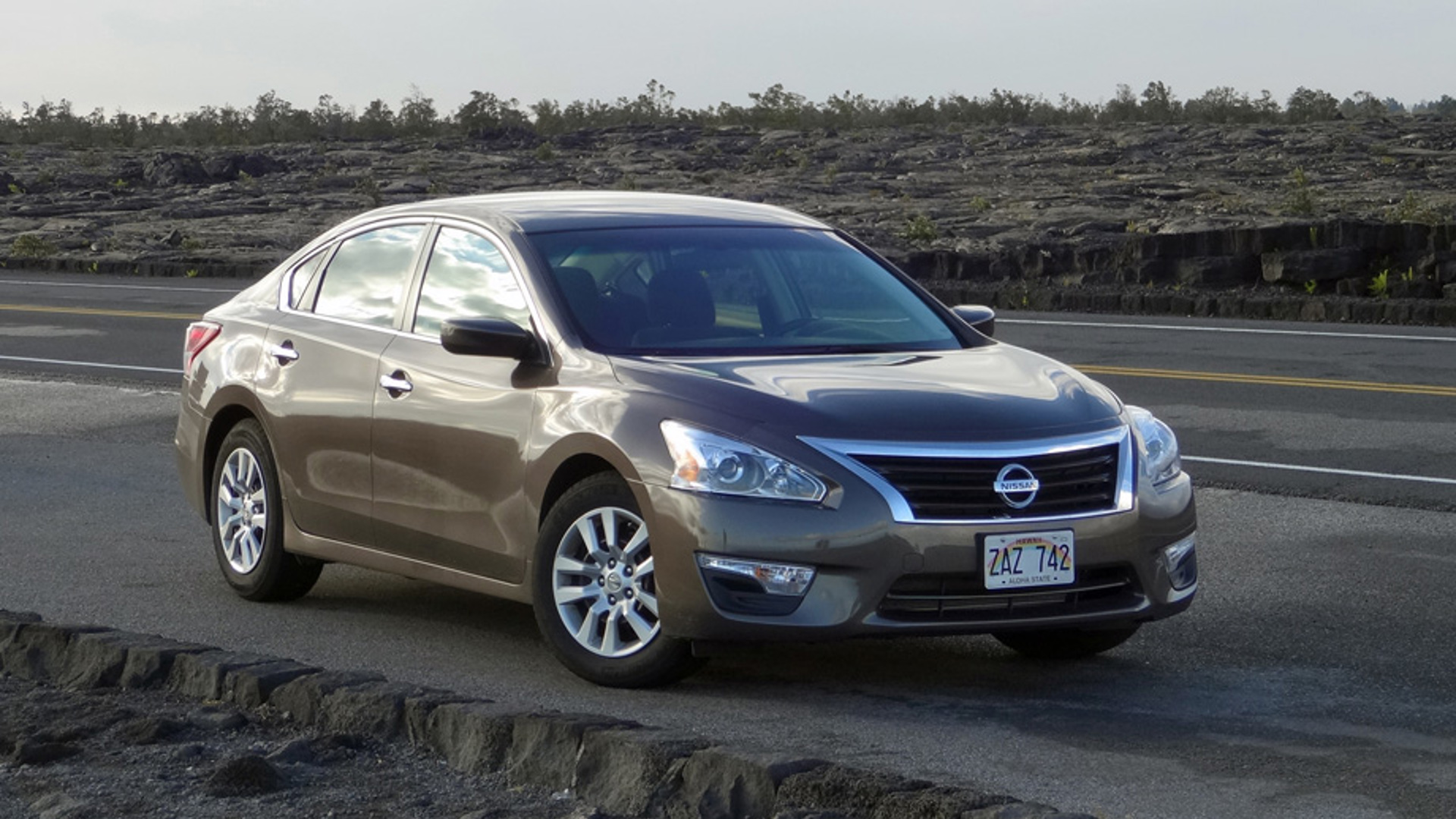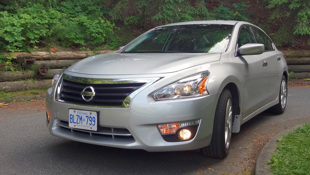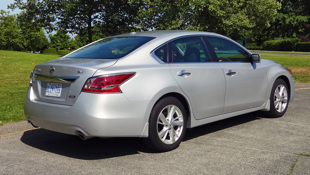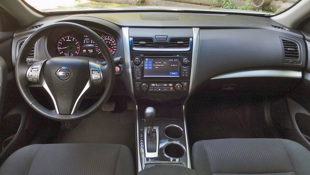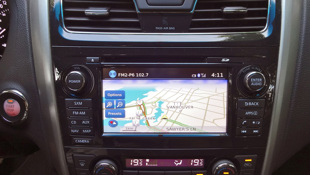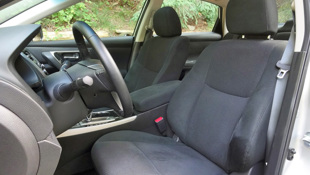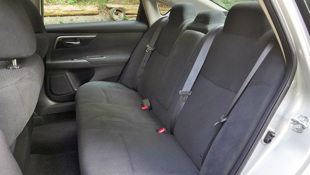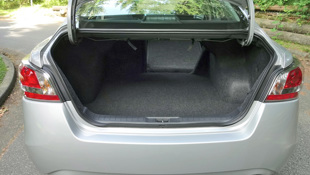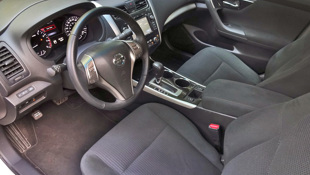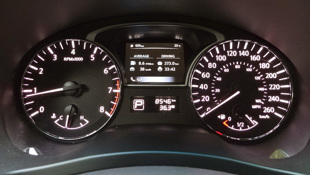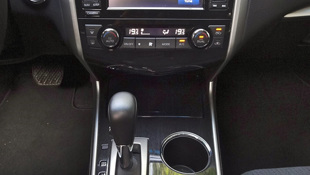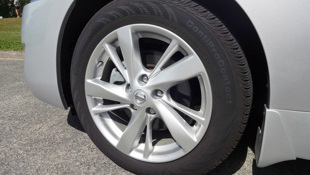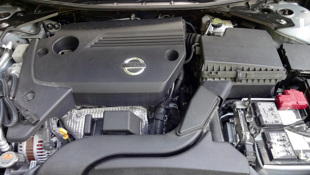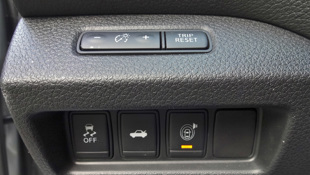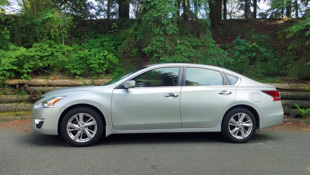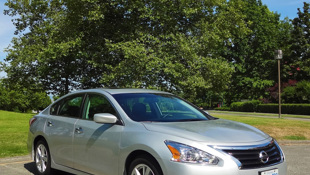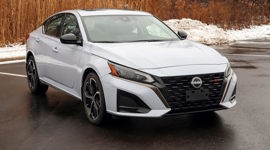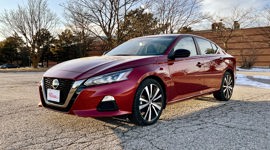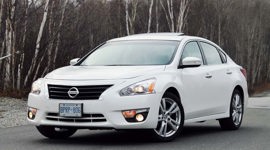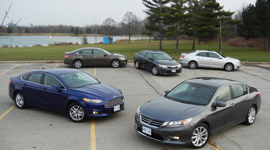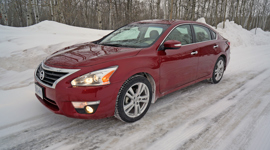If you're in the market for a mid-size family car, the sheer number of worthy contenders can seem downright overwhelming. Leading the popularity sweepstakes are the Ford Fusion, Honda Accord and Toyota Camry, with Hyundai's Sonata and Kia's Optima not far behind. Chrysler's new 200 is making its own splash, as are the Volkswagen Passat, Chevrolet Malibu, Mazda6, and several smaller niche players. Somewhere in the middle of all this is the Nissan Altima, a well-rounded and easy-to-live-with car that covers all the important bases – comfort, practicality, fuel economy, and value – with a splash of style and a hint of family-friendly performance.
The Altima was thoroughly redesigned for the 2013 model year, and it cruises into 2014 with only a few relatively minor content changes. These changes include improved sound deadening, revised seat cloth, chrome exhaust tips on all models, and the introduction of NissanConnect Apps smartphone integration platform. There are also some new packages available according to Nissan, chief amongst them a Technology Package with navigation, blind-spot warning system, moving object detection, lane departure warning and Sirius Travel Link, available on SV and SL trim Altimas.
Stylistically, last year's redesign brought the Altima in line with the appearance of the bigger Maxima (and not coincidentally the new, smaller Sentra as well). It's a good looking family car in my opinion, with the "Coke bottle" beltline giving it a graceful overall profile, and the sculpted headlights and taillights adding a slight – and welcome – touch of menace (Haney Louka disagrees and calls the styling "lumpy and overdone" in his review of the Altima 3.5, proving firstly that style is indeed a subjective thing, and secondly that he is wrong).
Inside, the Altima uses a mix of rigid plastics and soft-surfaced materials to create an ambience several notches above what one might expect for a car with a $25,273 base price (that's including the $1,575 destination fee). There are soft surfaces wherever you're likely to contact the interior, including front and rear door uppers, the instrument binnacle, and the passenger's side dash face (although the top dash pad is rigid plastic, and a bit shiny at that). The door inserts and console top are keyed to match the seat upholstery, and there's silver-painted plastic trim to add a splash of visual interest. Even in base trim, the Altima gets push-button start, Bluetooth telephone connectivity, air conditioning, cruise control, tilt and telescoping steering, and remote keyless entry.
Things I particularly liked about the Altima's interior are the good outward visibility compared to many of its competitors, the convenient closable cubby at the bottom of the centre stack (letting you hide your electronic devices next to the auxiliary input, USB input and 12V plug), and the "Zero Gravity" seats that are designed for maximum comfort based on NASA research into astronaut posture. In addition to driving the test car for a week, I rented a 2014 Altima for 10 days in Hawaii (they are understandably popular in rental fleets) and took it for an extended road trip around the Big Island during which both my wife and I commented on just how surprisingly comfortable the seats remained after long hours on the road. My two tall teenagers were equally happy thanks to the plentiful rear legroom and headroom. Trunk space is also good at 436 L, though you need to pay a bit of attention when loading things in order to keep items clear of the unprotected hockey-stick hinges.
On the negative side of the ledger I did notice that the silver-painted trim along the edge of the Hawaiian rental Altima's centre console suffered from paint lift, presumably due to the constant exposure to sunscreen-smeared legs resting against it. I'm also not convinced regarding the logic of using a mix of white and orange lighting for the controls and instruments, as it leaves the centre stack (which uses mostly orange lighting) looking like it's from a different generation car compared to the instruments (which use white lighting). I was, however, convinced of the logic of the major controls, which all fall easily to hand and are intuitive to use.
Under the hood, the Altima is available with a choice of two engines: a 3.5L V6 that generates 270 horsepower and 258 lb-ft of torque or, as in my test car, a revised and improved 2.5L inline-four that produces 182 horsepower and 180 lb-ft of torque. In either case, the engine is hooked up to a standard-equipment CVT (continuously variable transmission). Unlike in the previous-generation Altima, there is no manual transmission available.
I found the four-cylinder engine to be plenty powerful enough for everyday driving, and working with the CVT it'll launch the Altima from 0 to 100 km/h in just under eight seconds. It's worth noting that while Nissan's unwavering dedication to the use of CVT transmissions used to be a bit of a defining characteristic of the marque – and by extension of the Altima itself – this is becoming less and less true these days. Partly this is because other marques are jumping on the CVT bandwagon (think Honda Accord and Subaru Legacy), drawn by the transmission's ability to always keep the engine at the ideal revs for best fuel economy. It's also partly because the latest-generation CVTs are much improved over earlier efforts.
In normal driving the Altima's transmission is completely unobtrusive, and allows the engine to tick quietly along just above idle, making for a serene driving experience. Mash the pedal and the engine does rev up rather noisily and remains near redline until you back off the throttle, but you get used to this characteristic. The Altima does offer programmed virtual "shifts" if you slip the gearshift into DS (sport) mode, but frankly I found this feature more distracting than anything else, as it made it seem as if the engine was hiccupping (and manual control of the virtual shifts isn't available unless you opt for the 3.5L engine). I found sport mode most useful for descending hills, as it enables a greater degree of engine braking. Overall, I did miss the directness of a traditional automatic (or a manual transmission) when piloting the Altima along twisting volcano roads in Hawaii, but the rest of the time I found the CVT entirely acceptable – and that's coming from a long-time CVT skeptic. The Altima 2.5's performance at the fuel pump sealed the deal, as whether I was driving on tropical highways or damp Vancouver city streets I managed to achieve excellent fuel economy. Based on EPA estimates, city/highway ratings using the upcoming 2015 five-cycle testing should come in at 10.2/7.4 L/100 km for the Altima 2.5, and I averaged 8.6 L/100 km in mixed driving in the test car.
The Altima doesn't disappoint in terms of ride or handling, either. It has a well-sorted chassis that offers a perfectly comfortable ride during every day driving, while remaining genuinely pleasurable to wind along twisty roads. Part of this is due to Nissan's Active Understeer Control, which works by braking the inside wheels during cornering in order to improve steering response and control. It's an effective but unobtrusive system, so you don't feel it doing its thing and all you notice behind the wheel is the resulting crisp cornering.
The Altima's rigid chassis undoubtedly aids in the handling department, while also helping protect occupants in the event of a crash. In testing performed by the IIHS (Insurance Institute for Highway Safety), the Altima achieved good safety ratings in most crash tests and an acceptable rating in the challenging small overlap front crash test, earning it an IIHS Top Safety Pick award.
With its base price of $25,273 including destination, the Altima 2.5 is right in line with its major competitors, including the Toyota Camry ($25,370), Honda Accord ($25,810) and Ford Fusion ($24,099, all prices including destination). Moving up from the base trim, the Altima 2.5 is also available in S, SV (as tested) and SL trims, topping out at $30,473 destination in. The Altima 3.5 comes in SL trim only ($34,573 with destination charges).
The S trim adds features including intelligent key with remote start, rear-view camera, Nissan ConnectApps, text messaging, six-way power driver's seat, display audio with 5-inch colour screen, USB port, satellite radio, automatic headlights, and heated outside mirrors. SV adds 17-inch alloy wheels (instead of 16-inch steelies), power moonroof, dual-zone climate control, leather-wrapped steering wheel and shift knob, heated front seats, and a few other features. SL trim gets leather upholstery, eight-way adjustable power driver's seat with lumbar support, heated steering wheel, ambient lighting, autodimming mirror, upgraded nine-speaker Bose audio system, rear passenger air conditioning vents, universal garage door opener, and unique interior trim.
All in all the Altima 2.5 makes a genuinely good impression, and during my time with the car – both in Hawaii and back home in Vancouver – I found myself liking it more and more as time went by. It offers everything families are looking for in terms of space, practicality, and economy while punching above its weight in terms of style and luxury. So while family car shoppers will certainly want to check out the top three contenders, it would be a mistake not to take a serious look at the Nissan Altima as well.
| Model Tested | 2014 Nissan Altima 2.5 SV |
|---|---|
| Base Price | $26,198 |
| A/C Tax | $100 |
| Destination Fee | $1,575 |
| Price as Tested | $29,108 |
|
Optional Equipment
$1,235 (Technology Package, Brilliant Silver paint)
|
|
